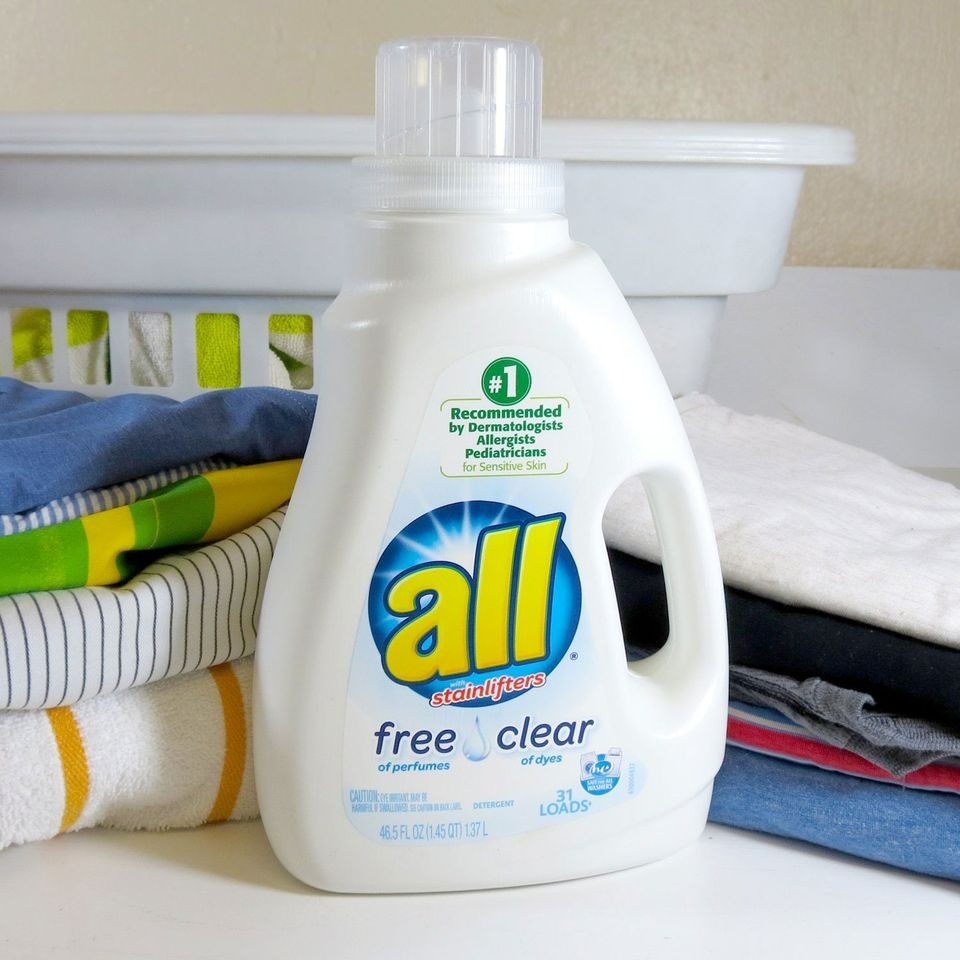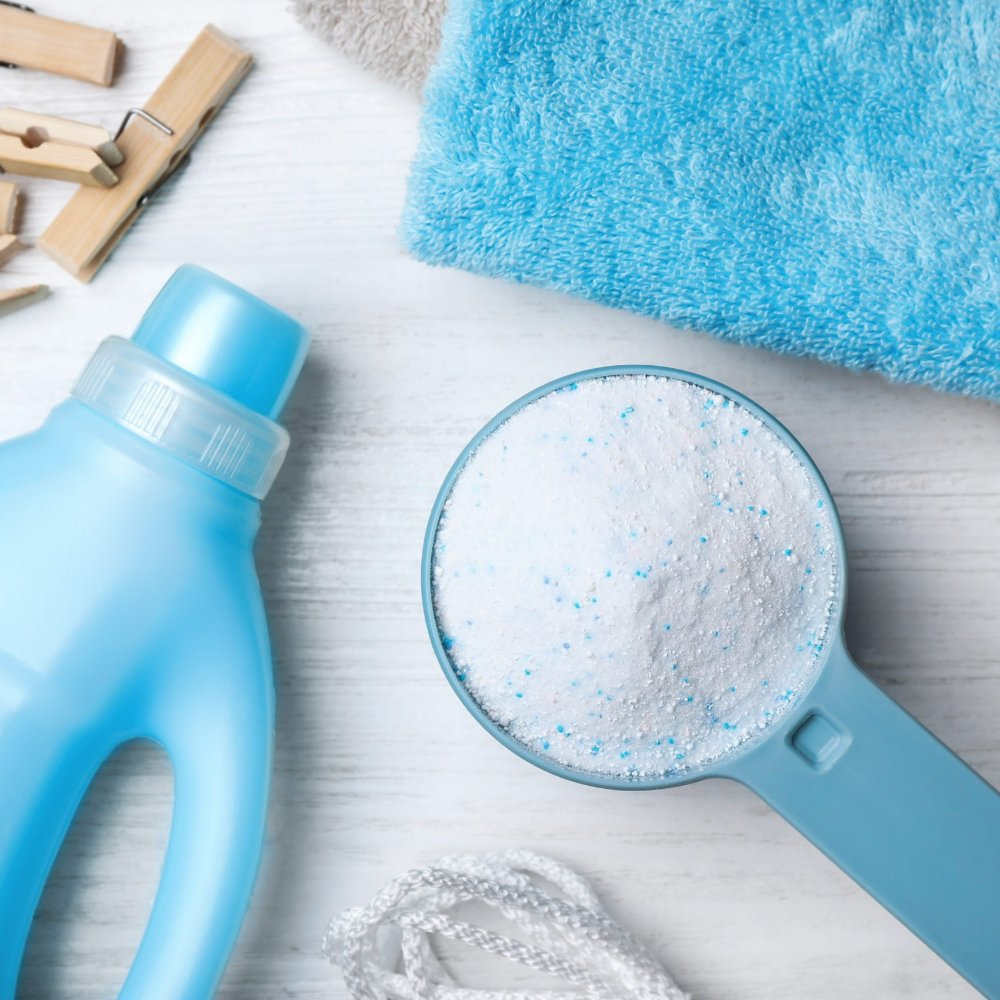The Hidden Dangers of Popular Laundry Detergents
The laundry aisle smells fresh and clean. But this scent can hide dangerous secrets. Popular laundry detergents often carry hidden dangers. Known for their strong cleaning power, they may contain harmful substances.
Key Toxic Chemicals to Avoid
Be wary of certain ingredients in your laundry detergent. Harmful chemicals like phosphates, bleach, and formaldehyde are common. They are rough on the environment and your health. Phthalates and surfactants in ‘fragrance’ can also be toxic.
Laundry detergents often list ‘optical brighteners’ on their labels. These chemicals are not as innocent as they sound. They can cause skin reactions in sunlight. Some cause more serious health issues over time.
Ingredients such as Sodium Lauryl Sulfate (SLS) can harm marine life and irritate human skin. It’s important to check your laundry detergent’s label. Make sure you’re not washing your clothes with these dangerous substances.
Health Risks of Chemical Laden Detergents
Detergents with toxic chemicals pose many health risks. They can lead to skin irritation, respiratory issues, and allergies. Long-term exposure can cause more severe problems. Hormonal disruption and potential cancer risks are not off the table.
Toxic residues can remain on clothes after washing and can be absorbed by your skin. This exposure can cause itching, rashes, and other skin problems. It’s essential to understand the ingredients. This way, you can protect your health from these chemical risks.

Impact on Health and Environment
The dangers of laundry detergents extend beyond the wash cycle. These products can leave lasting effects on both human health and the environment.
Long-Term Health Implications
Toxic substances in laundry detergents can cause serious health issues over time. Continuous exposure may lead to hormone disruptions, cancer, and other chronic conditions. Fragrances that smell fresh may trigger allergies or asthma. Substances like 1,4-dioxane, found in some detergents, are known carcinogens.
Effects on Aquatic Ecosystems
Chemicals from detergents don’t just vanish; they end up in waterways. Here they can harm aquatic life by reducing oxygen and causing algal blooms. Surfactants, common in detergents, are toxic to fish and can damage entire ecosystems. Phosphates lead to over-fertilization of water bodies, choking the life within. It’s not just fish—these effects ripple up the food chain. The most toxic laundry detergent brands use these harmful chemicals without regard for the environment.
Understanding Eco-Friendly Laundry Products
Transitioning to eco-friendly laundry products not only benefits our health but also protects the environment. Harmful substances in conventional detergents can cause severe damage. Eco-friendly products avoid these dangers through safer formulations.
Benefits of Plant-Based Detergents
Plant-based detergents offer significant advantages. They’re made from renewable resources, reducing the reliance on harmful chemicals. These detergents are gentle on clothes and skin, making them ideal for sensitive individuals. By breaking down safely in the environment, they minimize pollution in water bodies. Opting for plant-based detergents can significantly lower your household’s chemical exposure.
Identifying Eco-Friendly and Transparent Labels
Choosing the right eco-friendly product involves understanding labels. Look for detergents that list all ingredients clearly. This transparency helps consumers identify safe products. Certifications such as USDA Organic or EcoCert indicate environmental compliance. Avoid products with vague claims like ‘natural’ or ‘green’ without certification. By educating yourself about labels, you can make informed and safe choices in laundry care.

Safer Alternatives to Traditional Detergents
Exploring safer alternatives to traditional detergents is essential for health and the environment. These alternatives offer effective cleaning without the risks associated with toxic chemicals.
Advantages of Biodegradable Detergent Sheets
Biodegradable detergent sheets are an innovative solution. They are:
- Pre-measured, so you use the right amount every time.
- Easy to store and transport, reducing plastic waste.
- Completely dissolvable, leaving no residue on clothes or in the environment.
- Made with plant-based ingredients that are gentle on skin and fabrics.
These sheets come with fewer health risks and are straightforward in use. They are advantageous for anyone looking to reduce their ecological footprint.
The Role of Soap Nuts and Wool Dryer Balls
Soap nuts and wool dryer balls are natural alternatives to chemical detergents:
- Soap nuts clean clothes using natural saponins and are compostable after use.
- Wool dryer balls naturally soften fabrics and reduce drying time, saving energy.
Both of these options are reusable and free from synthetic fragrances and additives, making them better for your health and the environment.
Choosing eco-friendly laundry care is not only safer but also a step towards more sustainable living. With these alternatives, you contribute to a healthier planet and reduce the toxins in your home.
The Truth Behind Marketing Claims
Navigating the laundry detergent aisle can be tricky. Companies often use terms that sound environmentally friendly or safe, but these claims might not always be trustworthy. As a savvy shopper, it’s important to understand what these marketing phrases really mean for your health and the environment.
Deciphering Detergent Labels and Certifications
Labels and certifications on detergent packages help inform your choices. Look for clear listings of all ingredients, which indicate transparency. Trustworthy certifications like USDA Organic or EcoCert suggest the product meets high environmental standards. Be cautious with products that hide their full ingredient lists or lack reputable certifications.
Some key certifications to look for include:
- Safer Choice by the U.S. EPA: Shows the product’s ingredients are safer for human health and the environment.
- Green Seal: Indicates the detergent meets strict, science-based criteria for performance and environmental sustainability.
- Leaping Bunny or Cruelty-Free: Signifies no animal testing was involved in the product’s development.
Misleading Phrases and Greenwashing Tactics
Some brands use vague phrases like ‘natural’ or ‘green’ which are not regulated and can be misleading. This tactic, known as greenwashing, gives a false impression of safety or eco-friendliness. Avoid being swayed by these terms without further proof, such as specific claims regarding the lack of harmful chemicals or third-party certifications supporting the brand’s environmental claims.

How to Make an Informed Detergent Choice
Choosing the right laundry detergent is vital for your health and the environment. Here’s how to make smart choices effectively.
Educating Yourself on Ingredients and Impact
Understand the ingredients in your detergent. Check labels for harmful chemicals like phosphates and SLS. Know the potential health impacts these substances carry. Educate yourself to protect your skin and overall health. Avoid detergents with fragrances, dyes, and preservatives. Choose products with fewer and simpler ingredients.
Resources for Evaluating Product Safety
Use resources like the EWG’s website to check detergent safety ratings. Look for products certified by reputable organizations such as USDA Organic or EcoCert. Trust detergents with transparent ingredient lists and eco-friendly certifications. This scrutiny ensures you avoid harsh chemicals. Making these checks a habit can safeguard your health and protect our planet.
Making the Switch to Non-Toxic Detergents
Steps to Transition Smoothly
Transitioning to non-toxic detergents doesn’t have to be daunting. Here are some simple steps to make the switch smoother:
- Start by assessing your current products. Examine the labels of your existing detergents. Look for harmful chemicals like phosphates, formaldehyde, and SLS. These are key indicators it’s time for a change.
- Research safer alternatives. Use sources like the EWG’s website to find detergents with safer ratings. Opt for products with transparent ingredient listings and reputable certifications.
- Phase out old products gradually. If you can’t switch everything at once, start with one product. Replace your next purchase of laundry detergent with a non-toxic alternative.
- Use the right amount. Follow the dosing instructions carefully. Overusing detergent doesn’t mean cleaner clothes and can leave residues.
- Dispose of hazardous detergents responsibly. Avoid pouring them down the drain. Check community guidelines for disposing of chemicals safely.
Beneficial Changes for Health and Environment
Making the switch to non-toxic detergents brings numerous benefits:
- Reduced health risks. Non-toxic detergents are less likely to cause skin irritation, allergies, and long-term health issues.
- Safer home environment. By reducing airborne toxins from scented and chemical-laden products, indoor air quality improves.
- Environmental preservation. Non-toxic detergents are generally biodegradable, reducing water pollution and protecting aquatic life.
- Less packaging waste. Many eco-friendly detergents come in minimal or recyclable packaging, reducing landfill waste.
- Support for sustainable businesses. Purchasing from companies that prioritize the environment drives the market towards greener practices.
By understanding the ingredients and switching to safer alternatives, you contribute to a healthier home and a more sustainable world.